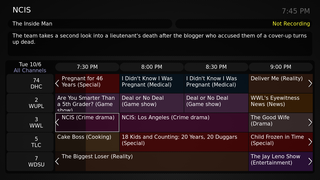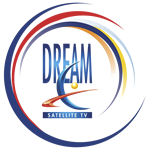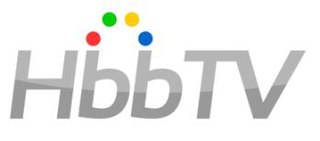Related Research Articles

Bell Satellite TV is the division of BCE Inc. that provides satellite television service across Canada. It launched on September 10, 1997. As of April 2017, Bell Satellite TV provides over 700 channels to over 1 million subscribers. Its major competitors include satellite service Shaw Direct, as well as various cable and communications companies across Canada.
Cisco Videoscape was a majority owned subsidiary of News Corp, which develops software for the pay TV industry. NDS Group was established in 1988 as an Israeli start up company. It was acquired by Cisco in 2012 before being sold back to the private equity company Permira in 2018 for US$1 billion. The company is currently headquartered in Staines, United Kingdom.
Pirate decryption is the decryption, or decoding, of pay TV or pay radio signals without permission from the original broadcaster. The term "pirate" is used in the sense of copyright infringement. The MPAA and other groups which lobby in favour of intellectual property regulations have labelled such decryption as "signal theft" even though there is no direct tangible loss on the part of the original broadcaster, arguing that losing out on a potential chance to profit from a consumer's subscription fees counts as a loss of actual profit.

Internet Protocol television (IPTV) is the delivery of television content over Internet Protocol (IP) networks. This is in contrast to delivery through traditional terrestrial, satellite, and cable television formats. Unlike downloaded media, IPTV offers the ability to stream the source media continuously. As a result, a client media player can begin playing the content almost immediately. This is known as streaming media.

A conditional access module (CAM) is an electronic device, usually incorporating a slot for a smart card, which equips an integrated digital television or set-top box with the appropriate hardware facility to view conditional access content that has been encrypted using a conditional access system. They are normally used with direct-broadcast satellite (DBS) services, although digital terrestrial pay TV suppliers also use CAMs. PC Card form factor is used as the Common Interface form of Conditional Access Modules for DVB broadcasts. Major CAM manufacturers include: Neotion, SmarDTV and SMIT.

Electronic programming guides (EPGs) and interactive programming guides (IPGs) are menu-based systems that provide users of television, radio and other media applications with continuously updated menus that display scheduling information for current and upcoming broadcast programming. Some guides also feature backward scrolling to promote their catch up content. They are commonly known as guides or TV guides.
VideoGuard, produced by NDS, is a digital encryption system for use with conditional access television broadcasting. It is used on digital satellite television systems - some of which are operated by News Corporation, which owned about half (49%) of NDS until its sale to Cisco in 2012. Since 2018 VideoGuard is improved and maintained by Synamedia. Its two most widely used implementations are Sky in the United Kingdom and Ireland and DirecTV in the United States, the former of which launched the digital version of the system in 1998.
Television encryption, often referred to as scrambling, is encryption used to control access to pay television services, usually cable, satellite, or Internet Protocol television (IPTV) services.

Nagravision is a company of the Kudelski Group that develops conditional access systems for digital cable and satellite television. The name is also used for their main products, the Nagravision encryption systems.
Conditional access (CA) is a term commonly used in relation to software and to digital television systems. Conditional access is that ‘just-in-time’ evaluation to ensure the person who is seeking access to content is authorized to access the content. Said another way, conditional access is a type of access management. Access is managed by requiring certain criteria to be met before granting access to the content.

Dreambox is a series of Linux-powered DVB satellite, terrestrial and cable digital television receivers, produced by German multimedia vendor Dream Multimedia.
Card sharing, also known as control word sharing, is a method of allowing multiple clients or digital television receivers to access a subscription television network with only one valid subscription card. This is achieved by electronically sharing a part of the legitimate conditional access smart card's output data, enabling all recipients to gain simultaneous access to scrambled DVB streams, held on the encrypted television network.

A free-to-air or FTA Receiver is a satellite television receiver designed to receive unencrypted broadcasts. Modern decoders are typically compliant with the MPEG-2/DVB-S and more recently the MPEG-4/DVB-S2 standard for digital television, while older FTA receivers relied on analog satellite transmissions which have declined rapidly in recent years.
Television in France was introduced in 1931, when the first experimental broadcasts began. Colour television was introduced in October 1967 on La Deuxième Chaîne.
Addressability is the ability of a digital device to individually respond to a message sent to many similar devices. Examples include pagers, mobile phones and set-top boxes for pay TV. Computer networks are also addressable via the MAC address on Ethernet network cards, and similar networking protocols like Bluetooth. This allows data to be sent in cases where it is impractical to control exactly where or to which devices the message is physically sent.
AB Sat is a package of digital terrestrial television channels offered by the satellite companies Hot Bird and Astra and marketed in France, Belgium, Switzerland and Germany. The channels are all run by the cable operators and certain networks ADSL. ABSAT has a stake on two digital terrestrial television channels. The company is chaired by Michele Cotta.

Dream Satellite TV was the first all-digital Direct-To-Home (DTH) television broadcasting service via satellite in the Philippines. Broadcasting from the Dream Broadcast Center located at the Clark Special Economic Zone in Pampanga. Content is received from program providers, compressed and broadcast via Koreasat 5 in DVB-S and NTSC color format exclusively to its subscribers using the Integrated Receiver-Decoder and the Conax/Nagravision 3 Encryption System.
There are various implementations of the Advanced Encryption Standard, also known as Rijndael.

Hybrid Broadcast Broadband TV (HbbTV) is both an industry standard and promotional initiative for hybrid digital TV to harmonise the broadcast, Internet Protocol Television (IPTV), and broadband delivery of entertainment to the end consumer through connected TVs and set-top boxes. The HbbTV Association, comprising digital broadcasting and Internet industry companies, has established a standard for the delivery of broadcast TV and broadband TV to the home, through a single user interface, creating an open platform as an alternative to proprietary technologies. Products and services using the HbbTV standard can operate over different broadcasting technologies, such as satellite, cable, or terrestrial networks.

GlobeCast World TV was a television via satellite service received in North America via the Galaxy 19 satellite, providing ethnic television and audio channels. It was a service by Globecast, a subsidiary of Orange. In North America, the satellite broadcasts dozens of Arabic and Asian channels.